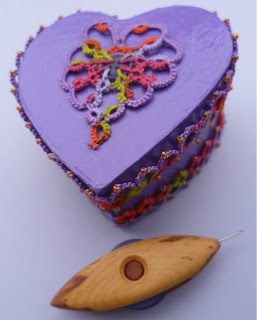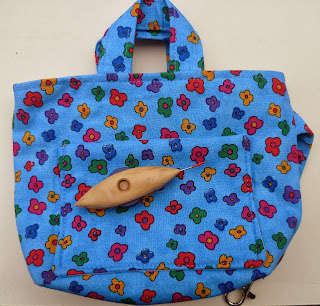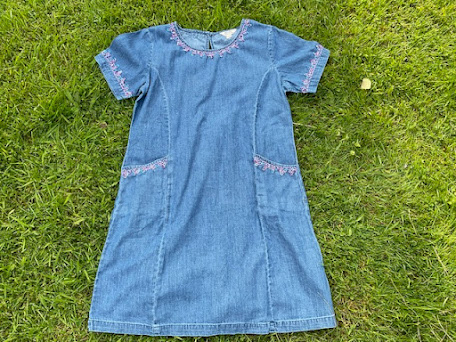Ring out those Bells!
The person that makes the card inserts for the pop-a-bobbin shuttles is an ex-printer and is an absolute genius when it comes to anything to do with printing. His name is Mr. Bell and of course he is married to Mrs. Bell, so with that in mind I have tatted them some bells!
The pattern is Yarnplayer's joyful bell pattern with beads plus the addition of tiny bells which I purchased awhile back, recently I bought the bigger ones you see in the picture, but not sure what to do with them yet. It is a quick and easy pattern but so effective, thank you Marilee.
Three of our churches have bells but they do not have bell towers. This picture shows some ancient clangers that are on the wall of one of them, they are said to be from the 13th century.
Now the rope that you see bell ringers holding on to as they ring the bell has a coloured piece called a "sally". This Sally used to be a bell ringer at a very famous church and below is a very old photograph to proof it.
This time next week the bells will be ringing out to celebrate Christmas.








A sally! I never knew that. And you must be...! Thanks for such a great post today. Love the old pictures and those clangers look wonderful . Imagine - possibly the 13th century, but definitely ancient. And to think we think 200 years is a big deal in Canada!
ReplyDeleteFox : )
lovely post and lovely tatting! I'm curious to know what threads you used! They look great and shimmery.
ReplyDeleteCrikey I'd forgotten you were a bell ringer. I always wanted to do that too. One of my Silver Surfers is a bell ringer. Love the tatted bells. Say a big thank you to Mr Bell from me.
ReplyDeleteThanks Fox - it is surprising what you can find in a church!
ReplyDeleteI meant to put that in the post Wickedtat, but forgot! The thread is some old Altin Basak together with 80 thread the right bell being multi-coloured. The Altin-Basak is not easy to work with but when using both threads together it is slightly better. The effect is quite stunning too.
Well Jane you must know which one is me in the photograph!
I thought you might be the one in the back on the left and then I thought the 2nd one from the left further forward. We don't see many photos of your to compare with!
ReplyDeleteI like that bell pattern too though I haven't tatted any this year. Yet.
Ah Gina as you are the only one to have a go at guessing, will tell you that I am the one in the middle row on the left, with long blonde hair. I can also tell you it was the time when dresses were short and so it was best to wear a sleeveless dress otherwise when you put your hands up to hold the rope - well I needn't tell you what happened next!
ReplyDeleteLove the tatted bells and the information was quite informative! As for the days of the mini skirt well what can I say those were the days.
ReplyDeleteWhat an honor to have my little bell pattern tatted by a real bell ringer :)
ReplyDeleteBeautiful effect with the shiny thread and tiny bells.
Believe me, I guessed you as the one on the left with blonde hair too! I was in handbell choir when I was a teen. I got to handle the big bonkers(C and D and flats) We toured to area churches putting on little concerts. I don't do bell ringing now. My sister was in handbells too and she still is ringing with other members during some services. Mostly at Christmas time.
ReplyDeleteHello,
ReplyDeleteMay I please ask you a question? I intend to make the necklace that you gave the pattern for on December 1, 2010, but the yarn that I have tried sofar is way too thin. What type of thread did you use??
Hi Tattingrid, in answer to your question I used 20, hope that helps. You can contact me on popabobbinshuttle@gmail.com if you require more help.
ReplyDelete